https://bharatshakti.in/defence-procurement-strengthening-our-achilles-heel/
EDITOR’S NOTE
There was much hope in the strategic and defence communities when the current dispensation in Delhi moved at a fast pace on aspects concerning modernization of the armed forces and acquisitions to achieve it. However, the story so far has been patchy at best. The necessary boost in pace of either acquisition or tangible progress in indigenisation, has not been witnessed. The author has a decade of experience in defense procurement. He has initiated and piloted some successful programs and is conversant enough with the system and its mechanics to outline parameters for our approach to acquisitions in the long run. This article is the first part of a series to be written by him for BharatShakti.
DEFENCE PROCUREMENT: STRENGTHENING OUR ACHILLES HEEL
India is a trillion-dollar economy with aspirations to the high table at the UN but does not have the capability of equipping its Armed Forces with basic weaponry – rifles, guns, tanks and aircraft. 70 years of independence and we are far away from self- sufficiency. For the next decade we will be the net highest defence importer. Our VCOAS has remarked that even Pakistan has a better way of defense procurement and Indigenisation. Defense procurement is our Achilles heel. What do we do?

Image Courtesy: Rediffnews.com
The History of Stunted Indigenisation
Tanks
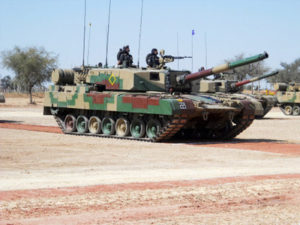
Arjun MKII (Image Courtesy: The Times of India)
In 1961, The Heavy Vehicle Factory, Avadi was set up to herald a generation of Indian tanks. Six decades later the scorecard reads – licensed production of Vijayant Tanks (M/s Vickers), T72 and T90 Tanks (Russia) and
manufacture of DRDO designed Arjun Tanks. The Army clearly does not want Arjun Tanks. To cap it, Indian made T90 tank engines failed in the international Tank Biathlon recently. A shame. We are at a dead end in Indigenisation of tank design, development and production. The Future Ready Combat Vehicle (FRCV) at present, is a dream in a fantasy.
manufacture of DRDO designed Arjun Tanks. The Army clearly does not want Arjun Tanks. To cap it, Indian made T90 tank engines failed in the international Tank Biathlon recently. A shame. We are at a dead end in Indigenisation of tank design, development and production. The Future Ready Combat Vehicle (FRCV) at present, is a dream in a fantasy.
Aircraft
In the 60s, HAL was manufacturing Gnats under license from Folland. Gnats did extremely well in the 1965 and 1971 wars. The LCA program launched in the 80s ignited hope. We were to step into the big league with our own
indigenous fighter aircraft. Three decades later, the LCA is likely to be forced into Service with the conditional lifeline of ‘foreign technology’. HAL continues to manufacture Russian aircraft under license.
indigenous fighter aircraft. Three decades later, the LCA is likely to be forced into Service with the conditional lifeline of ‘foreign technology’. HAL continues to manufacture Russian aircraft under license.
Guns
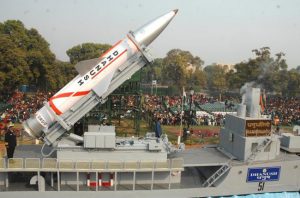 The Field Gun Factory, Kanpur was established to manufacture 105 mm Field Guns in the 80s. It was an integrated visionary concept where metal input at one end became a gun at the other. The Gun Factory is near idle these days. In 1983, the 155 mm Bofors Guns was contracted with ToT. The ToT was locked up and forgotten for 25 years. Finally, ToT documents were opened, and we designed an upgraded version of Bofors called the Dhanush. Our beacon of Indigenisation seems to be getting mired in the disease of familiar controversy.
The Field Gun Factory, Kanpur was established to manufacture 105 mm Field Guns in the 80s. It was an integrated visionary concept where metal input at one end became a gun at the other. The Gun Factory is near idle these days. In 1983, the 155 mm Bofors Guns was contracted with ToT. The ToT was locked up and forgotten for 25 years. Finally, ToT documents were opened, and we designed an upgraded version of Bofors called the Dhanush. Our beacon of Indigenisation seems to be getting mired in the disease of familiar controversy.Rifles
The 7.62 mm SLR was the standard rifle in the 70s. DRDO and OFB combine came up with the 5.56 mm INSAS with great fanfare. It became the standard issue. However, men preferred the AK 47. INSAS was beset with problems and we never graduated from this unreliable rifle. The carbine and LMG never saw the light of the day. After three  decades, we are still behind the start point. We do not have an indigenous rifle, carbine or LMG. After proving to ourselves that we cannot design and develop rifles we are undecided how to buy them from foreign vendors.
decades, we are still behind the start point. We do not have an indigenous rifle, carbine or LMG. After proving to ourselves that we cannot design and develop rifles we are undecided how to buy them from foreign vendors.
 decades, we are still behind the start point. We do not have an indigenous rifle, carbine or LMG. After proving to ourselves that we cannot design and develop rifles we are undecided how to buy them from foreign vendors.
decades, we are still behind the start point. We do not have an indigenous rifle, carbine or LMG. After proving to ourselves that we cannot design and develop rifles we are undecided how to buy them from foreign vendors.Ships
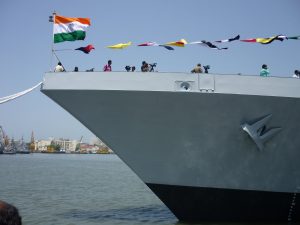
The seven follow-on Project 17 (Alpha) stealth frigates to be built in India will have a significant Indian weapons fit. (Image Courtesy: Livefistnews)
The Navy is slightly better off. It builds its own ships. However, it pretty much fits ships with systems which are foreign mostly. Very little Indigenisation barring the hull. To prove my point, we recently commissioned a submarine without torpedoes!
The Foreign Hands
Loss of Strategic Independence. We turn to Russia often to meet our defence requirements. Our trusted long-time friend has acquired a new-found friend in Pakistan! Russia sells equipment to milk us on lifetime costs. We also go to our new found Strategic Partner – USA – which sells us older generation equipment at great cost. Our latest friends are the Israelis from whom we import sensitive equipment. They have deep relations with the Chinese. In today’s interconnected world, every time we go for a foreign buy we compromise our Security and lose our
strategic independence.
Exorbitant Costs. We consistently pay dearly for something which is clearly not the best. A back of the envelop estimate indicates that we pay twice for any item on buying and another two to three times for spares and maintenance in its life cycle. All our foreign partners are getting rich at the expense of the poorest Indian
who can-not afford a square meal a day. Yet our foreign shopping list expands.
strategic independence.
Exorbitant Costs. We consistently pay dearly for something which is clearly not the best. A back of the envelop estimate indicates that we pay twice for any item on buying and another two to three times for spares and maintenance in its life cycle. All our foreign partners are getting rich at the expense of the poorest Indian
who can-not afford a square meal a day. Yet our foreign shopping list expands.
Lack of Technical Ability?
Demonstrated Capabilities. If our technological ability and capabilities are weak, my case rests. However, the pointers are in the opposite direction. The Integrated Missile Development Program, set up in the mid-80s, was

ISRO-NASA Joint Radar (NASA Jet Propulsion Lab)
under the stranglehold of MTCR. We overcame that and became totally self-sufficient in Rocket and Missile technology. India has sent a probe to Mars in nine months.
These are cutting edge technologies. We launch satellites for other nations! It is a great strategic leap. In normal conversation, people often use the phrase, “Look what you are doing is not rocket science”. Funnily we have mastered that – rocket science – and nothing much else. Indian brains contribute to the software development round the world. Yet we import defence software!
Present Capabilities. The situation can be turned around quickly. The basic edifice exists. Our flashes of brilliance indicate that things can get done. We have most of the technology we need – in India. What we do not have we can trade, leverage, innovate, adapt and seek alternates. To give an example – within one year; from concept to firing, we have converted an indigenous unguided rocket system into a top of the line guided system with double the range and better precision. Some achievement. Yes, We Can. Only if we intend to.
Defence Planning – Approach to Change
Complexity. Defence planning and procurement is a complex phenomenon. It takes knowledge and vision spanning multiple technologies to build an indigenous defence industrial complex. In the 70’s we were a poor nation but much better prepared. We are now a richer nation now but poorly equipped. Overall, we have regressed. The end play of the Make-In-India campaign does not seem to be encouraging. We are in the danger of being exactly where we were unless something drastic is done. We Need a Major Overhaul.

Image Courtesy: Indian Defence Review
Models of Change. USA reorganized their military into Theatre Commands based on the Nichols Goldwater Act and simultaneously instituted a program called Better Buying Power for defense acquisitions. China has recently reorganized PLA into theatre commands and embarked on an ambitious modernisation program.
UK has a roll on Ten Year Plan and has converted their Defence Equipment and Supply Organization into a bespoke trading entity by an Act of Parliament. Russia has consolidated its defence industry under one umbrella. What have we done?
Our outer limit of defence modernization has been an amended DPP which has only added bureaucratic hurdles. The strategic partnership model is full of holes. Superficial tweaking will not do. We need real change backed by a strong and clear headed political will to plan, implement and fructify our defence requirements. It cannot be done by part-timers, seasonal players and half-baked pseudo experts.
UK has a roll on Ten Year Plan and has converted their Defence Equipment and Supply Organization into a bespoke trading entity by an Act of Parliament. Russia has consolidated its defence industry under one umbrella. What have we done?
Our outer limit of defence modernization has been an amended DPP which has only added bureaucratic hurdles. The strategic partnership model is full of holes. Superficial tweaking will not do. We need real change backed by a strong and clear headed political will to plan, implement and fructify our defence requirements. It cannot be done by part-timers, seasonal players and half-baked pseudo experts.
Change to Self Sufficiency. We need to change to be self-sufficient in defence. That’s the single point prescription. In this article the contours of change have been outlined. In the forthcoming articles of this series, each issue and many more will be delved into. In due course, concepts and broad methods to achieve self-sufficiency in Defence Procurement will emerge.
Contours of Change
Approach and Attitude. The approach and attitude must be positive to procure equipment by a timeline in required configuration and within an overall cost envelope. It needs dedication, commitment, courage, conviction and honesty of purpose. Past murky defense deals have cast their shadow on current processes.
An atmosphere of mistrust, suspicion and extreme safe play to save one’s skin or to propagate ulterior motives prevails. The resultant is inertia to progress. This is compounded by an utter lack of responsibility and accountability in the system.
This needs to be turned around.
An atmosphere of mistrust, suspicion and extreme safe play to save one’s skin or to propagate ulterior motives prevails. The resultant is inertia to progress. This is compounded by an utter lack of responsibility and accountability in the system.
This needs to be turned around.
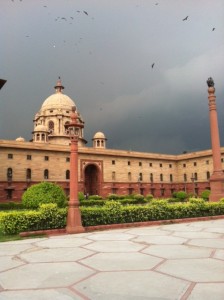
South Block
Integration of MOD. The MOD is disintegrated and compartmentalized. Each constituent of the MOD, including the MOD itself, Services, PSUs, OFB, DRDO and DGQA are independent silos with their own aims. These aims often work at cross purposes with each other to overall detriment. Team work through integration is the need of the day. Interconnection of the Silos at various levels is the first step.
The last step must be creation of the CDS. There are many intervening steps to homogenize the system.
The last step must be creation of the CDS. There are many intervening steps to homogenize the system.
Reform of DRDO, PSUs , OFB and DGQA. A significant amount of national resource has been sunk into these behemoths. They under-perform grossly. A choice is to make them perform or perish. It is preferable that they are reformed to perform. They have capacities and talent which if harnessed result will pole vault us into a higher orbit. However, lack of professionalism, pride, confidence, poor quality and inflated egos inhibits progress. A drastic make over is the need of the hour; which has been suggested by various Committees and Reports.
However mysteriously they have been implemented selectively in a watered-down manner. As a result, these behemoths continue to prosper in their merry ways to overall detriment.
Knowledge Levels. Knowledge levels of the entire procurement chain is below par. Learning to procure in advanced countries is formally codified. They have universities teaching procurement professionals their job. Our case is just the opposite. We start with zero knowledge. We are not taught. We rely only on OJT!
We never get to a visionary stage. In fact, our lack of knowledge at all levels shines through. At the highest levels, lack of knowledge is illuminating.
Lack of Planning. We have an utter lack of perspective planning. By saying this I am sure to have raised hackles. Undeniably each Service has a long-term Perspective plan which is a wish list. A true plan should be how to implement it, modify it with time and come out with a holistic solution at the end of the day which satisfies the man on ground. We do not stay the course. Every senior officer who assumes an appointment at the beginning recasts the perspective plan.
Hence the perspective plan is only a sum of constantly changing wish lists.
However mysteriously they have been implemented selectively in a watered-down manner. As a result, these behemoths continue to prosper in their merry ways to overall detriment.
Knowledge Levels. Knowledge levels of the entire procurement chain is below par. Learning to procure in advanced countries is formally codified. They have universities teaching procurement professionals their job. Our case is just the opposite. We start with zero knowledge. We are not taught. We rely only on OJT!
We never get to a visionary stage. In fact, our lack of knowledge at all levels shines through. At the highest levels, lack of knowledge is illuminating.
Lack of Planning. We have an utter lack of perspective planning. By saying this I am sure to have raised hackles. Undeniably each Service has a long-term Perspective plan which is a wish list. A true plan should be how to implement it, modify it with time and come out with a holistic solution at the end of the day which satisfies the man on ground. We do not stay the course. Every senior officer who assumes an appointment at the beginning recasts the perspective plan.
Hence the perspective plan is only a sum of constantly changing wish lists.
Layered Approach. There needs to be a layered approach to procurement. We need to see what is to be done on short term, midterm and long-term basis. For example, a item could be procured on a short-term basis through import. The same item could be procured through Indigenisation on a long-term basis. For this to happen we need visionaries with knowledge. An integrated project management approach needs to be adopted for selective and major but key projects.
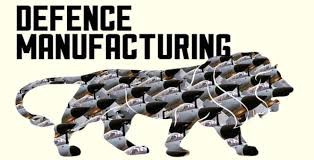
Image Courtesy: Defence News
Indigenisation. For an aspiring global power, our levels of indigenisation are low. This must be turned around through a proper indigenisation plan. Indigenisation must be carried out at multiple levels and fields including research and development, technology imbibing and manufacturing. There are many methods and models of Indigenisation. We might have to adopt one or more of the methods to eventually reach a stage of self-sufficiency. Whatever we do, one thing that cannot be passed off as Indigenisation is Rebranding.
 The Way Forward
The Way ForwardIn case self-sufficiency must be achieved in defense procurement it has to come about in a deliberate and methodical manner. Reform cannot be for rhetoric. It must be for effect. Ultimately the man on ground needs to be sufficiently armed to defend the nation. He is my center of gravity. The way forward is how to reach that.
LT GEN PR SHANKAR (RETIRED)

Comments
Post a Comment